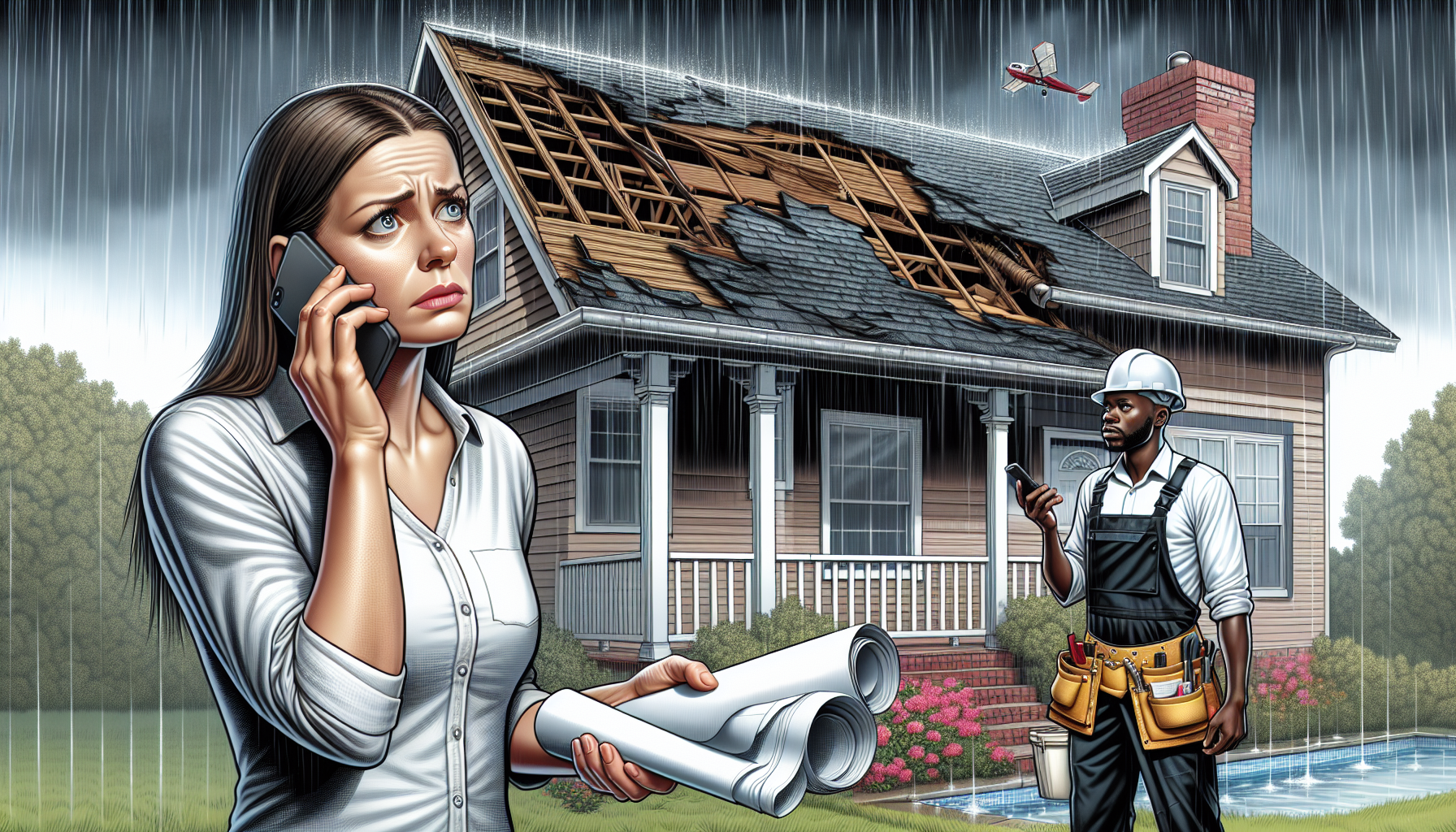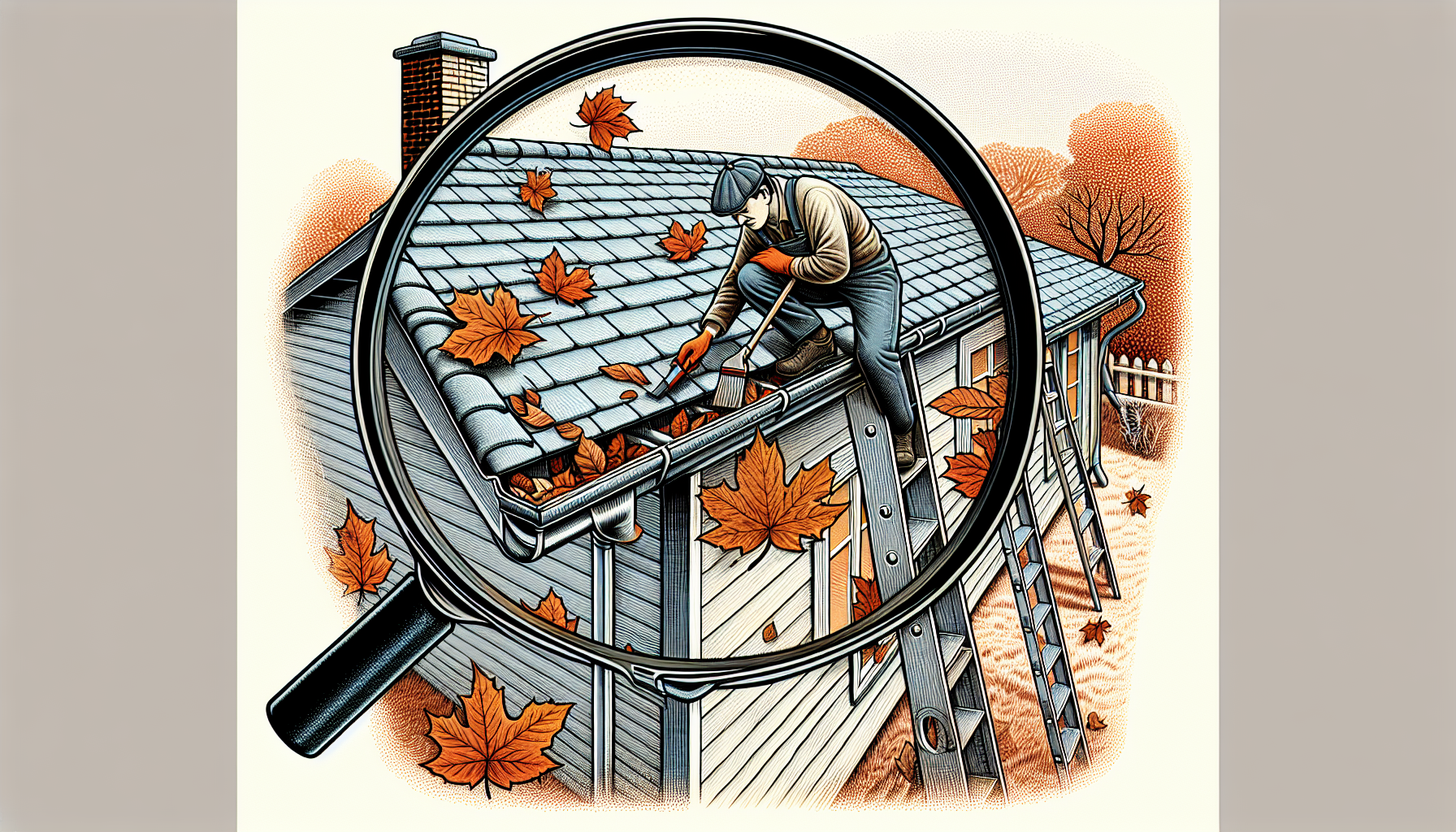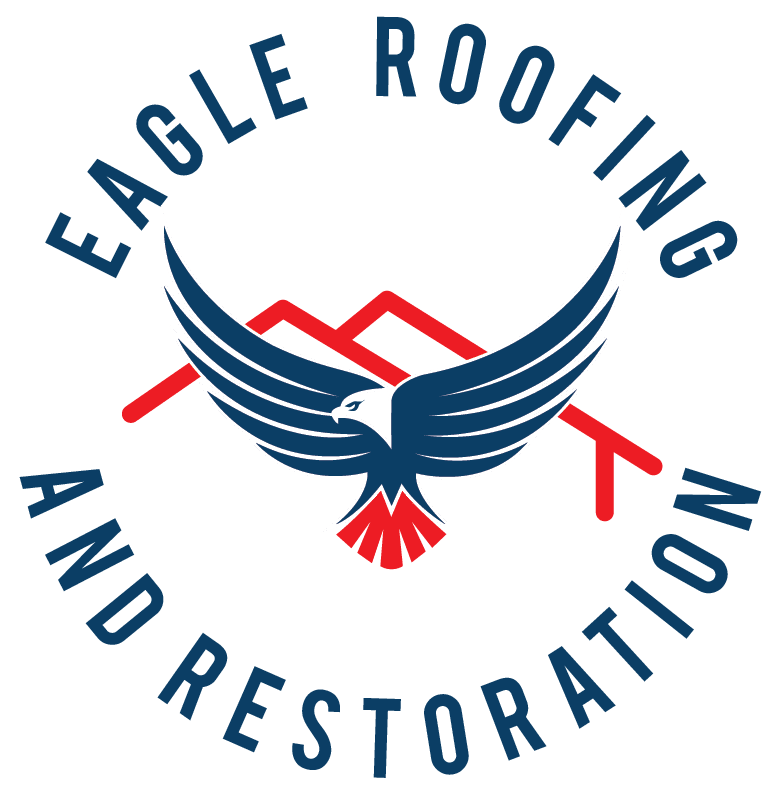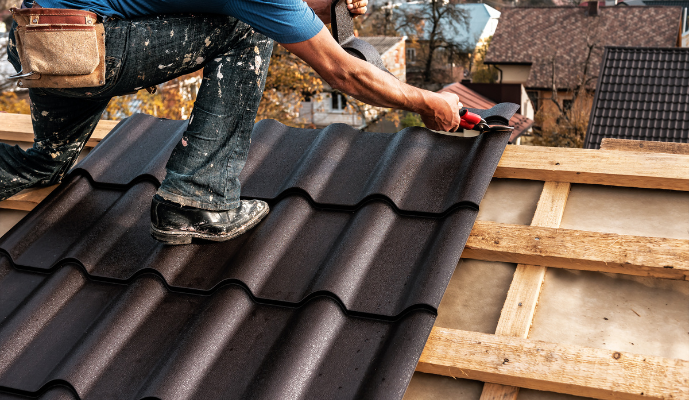Facing a roofing emergency? This guide on emergency roofing repair helps you act quickly and effectively. We’ll cover how to spot urgent issues, take immediate steps to mitigate damage, and ensure your home’s safety.
Key Takeaways
-
Recognizing signs of emergency roofing repair, such as water leaks, missing or damaged shingles, and structural issues, is crucial for preventing significant roof damage and safety hazards.
-
Immediate actions like ensuring safety, applying temporary patches, and documenting the damage are essential during a roofing emergency to mitigate harm and facilitate insurance claims.
-
Preventive measures, including regular roof inspections, gutter maintenance, and trimming overhanging trees, can help avoid future roofing emergencies and maintain the roof’s integrity.
Recognizing the Need for Emergency Roofing Repair
An emergency with your roof can arise unexpectedly, exposing your residence to weather-related threats and substantial safety hazards. To minimize damage and safeguard your abode, it’s crucial to promptly spot the telltale signs that warrant immediate attention for repairs on your roofing system. Key signs include leaks of water penetrating through, missing or impaired shingles, along with structural compromises that could weaken the shield provided by your roof.
Taking a vigilant approach in detecting these warning signals is essential. Incidents like powerful gusts of wind, invasions from rodents, or strikes from lightning can all impair the robustness of a roof structure and call for urgent action to be taken. Ignoring minor issues may lead them to escalate into major complications, underlining why consistent maintenance of roofs and swift execution of necessary repair work are important measures for homeowners.
Water Leaks
Water leaks are often the first sign of a leaking roof, manifesting as dark spots on ceilings, dips in shingles, or mold growth in the attic. These roof leak symptoms not only threaten the structural integrity of your roof, but can also lead to significant health hazards from mold and mildew. Even small leaks can escalate into major problems over time, causing structural damage and increasing energy costs due to compromised insulation.
Extensive damage to your home’s interior and attic, as well as higher repair costs down the line, can be a result of ignoring water leaks. To prevent these issues from worsening, it’s necessary to regularly inspect your roof for signs of water intrusion and address them promptly.
Missing or Damaged Shingles
Damaged or absent shingles are an unmistakable indication that the integrity of your roof has been breached. Keep an eye out for shingles that have come loose, those with cracks or indentations, as well as the wearing away of the granular coating on asphalt roofing materials. If these problems are ignored, they can escalate to minor issues such as leaks in your roof and blocked gutters, leading to mold proliferation—all culminating in a need for professional intervention.
To stave off Damage to your rooftop’s structure, it is crucial to quickly tend to any missing or compromised shingles. Failure to do so may pave the way for more serious consequences including significant structural damage due to water infiltration, which could be both expensive and require extensive repair efforts.
Structural Issues
Immediate action is necessary when structural concerns like a sagging roof or evident water intrusion are detected to stop damage and avoid potential dangers. The strain on the wood used for support beams, rafters, or trusses indicated by a drooping roof could precipitate a collapse if not swiftly remedied.
In instances where events such as falling trees have damaged crucial elements like fascia and soffit, there’s also an urgent need to maintain your home’s safety and stability. Such emergency roofing situations call for prompt identification and repair of these issues during emergency repairs.
Immediate Actions During a Roofing Emergency
In the event of a roofing emergency, maintaining calm and taking immediate action to mitigate damage is of utmost importance. Here are the steps to follow.
1. Prioritize safety by securing the area and removing debris.
2. Apply temporary patches to prevent further damage.
3. Document the damage thoroughly for insurance purposes.
4. Inspect the roof for areas of discoloration, exposed underlayment, and broken or missing shingles.
Using tarps or plastic sheeting to cover exposed areas can prevent further water damage until permanent repairs can be made. For insurance claims and coordination with professional roofing services, it’s important to document the damage with photos and videos. Taking these immediate actions can significantly reduce the impact of a roofing emergency and streamline the repair process.
Safety First
During a roofing emergency, the most important thing is to guarantee your own safety. Prioritize confirming that it’s secure to go outside and check that there are no electrical power lines nearby which could pose an electrical threat. Put on shoes with good grip to lessen the chance of slipping and falling. It might also be beneficial to employ a fall protection system as a precautionary measure against potential falls from the roof.
It is essential during an emergency concerning your roof damage, to remain collected and systematic in how you handle the situation. If at any point things seem too dangerous, seeking immediate help from professionals is advised in order not only to manage risks but also ensure effective resolution of your roofing issues.
Temporary Patching

During a roofing emergency, it’s critical to implement interim measures that will stave off additional harm. Employing tarps and plastic sheeting is an effective way to shield vulnerable sections from the elements and prevent water ingress until such time that lasting fixes can be executed. To make certain these provisional coverings hold firm, especially in adverse weather conditions, fasten them with either roofing nails or a strong adhesive.
For areas of damage that are more localized, one might opt for applying short-term roof patches or adhesives as a stopgap solution. Duct tape may serve as a temporary fixative for shingles at risk of coming loose. These expedients are not devised to endure over the long haul, but play an invaluable role in curtailing potential damages pending the commencement of expert repairs.
Documenting Damage
Documenting the damage is crucial for insurance claims and liaising with professional roofers. When it’s safe, examine the damaged area and record it using both photos and videos from various perspectives to thoroughly showcase all damage sustained. Keep all these visual records as well as any receipts meticulously organized from the start to aid in managing your insurance claim.
Preserve every receipt related to temporary repair materials since they can be submitted for reimbursement through your insurance company. Your roofer can contribute by recording damages too, offering support during your engagement with the insurer. Complete documentation of this kind will guarantee that you possess each piece of evidence required to substantiate your claim, helping streamline the process of getting repairs done efficiently.
Types of Emergency Roof Damage
Recognizing various forms of roofing emergency damage is crucial for taking prompt and effective action to mitigate Harm. Incidents like storms, falling trees, and the formation of ice dams are each distinct in their effects on a roof. When high winds or extreme weather conditions such as hurricanes or lightning strikes occur, they can lead to substantial roof issues including lost shingles and other structural damages.
When a tree falls onto a roof, it can cause significant structural problems that require immediate professional evaluation and repairs. Conversely, ice dams develop when snow melts then refreezes at the edge of roofs causing water to seep under shingles and invade walls which could result in expensive repair costs if not addressed quickly. Recognizing these different types of damage allows homeowners to act decisively during an emergency involving their roof’s integrity.
Storm Damage
One of the prevalent causes of emergency roof repair is storm damage. This can lead to a series of issues such as:
-
Dislodged or absent shingles
-
Spoiled soffit or fascia
-
Leaks within your home
-
Water infiltration and its resulting harm
-
Weakened structural integrity of the roof
The severity of these problems can be amplified by high winds, torrential downpours, and hail.
In order to halt Deterioration caused by storms, it’s imperative to undertake immediate repairs. The presence of debris or missing shingles on your rooftop after inclement weather typically signals that an urgent response is necessary for emergency roof service. Swiftly addressing this damage helps ensure the continued stability and protection offered by your domicile.
Tree Falls
If a tree falls on your roof, it can lead to considerable structural damage that requires urgent attention for inspection and repair by professionals. Tree branches may snap and shingles could become loose with winds reaching 45 mph, whereas entire limbs might fall and intact shingles could be torn away at wind speeds exceeding 75 mph.
It is crucial to have an expert evaluate the roof promptly after any incident involving a fallen tree in order to determine the extent of harm and organize required repairs. Quick response is essential in averting additional damage and maintaining your home’s security.
Ice Dams
Ice dams develop when snow and ice melt slightly, then refreeze at the roof’s edge. These can lead to issues including:
-
Clogging gutters and drainage systems
-
Pushing water beneath shingles which then seeps into walls, resulting in significant damage
-
Formulating substantial pools of water under the snow cover that may cause leaks and harm the integrity of your roof
During winter, these conditions make ice dams a serious issue.
It is essential to ensure adequate attic insulation and ventilation for preventing ice dams. By doing so, you help keep an even temperature across your roofing surface. Taking swift action against any forming ice dam can thwart expensive repairs from water infiltration while preserving your house’s fundamental structure.
Contacting Professional Roofing Services

In the event of severe damage, significant structural concerns, or extensive water damage, it is crucial to seek the expertise of professional roofers. They are adept at evaluating the extent of damage through detailed inspections and carrying out repairs with precision and safety. Prompt intervention is particularly critical if there’s a potential for structural compromise or substantial water infiltration.
It is also vital to engage with your insurance provider during such situations. Your insurer may suggest preferred roofing services providers and play an integral role in facilitating financial coverage for repairs stemming from natural events. Arranging permanent repairs without delay is key to mitigating Deterioration and associated health hazards.
Choosing a Reliable Roofing Contractor
Selecting a trustworthy roofing contractor is crucial when it comes to emergency roof repairs. It’s important that the roofer possesses an appropriate license and insurance, which serve as assurances of professional workmanship and accident protection. Be wary of novice contractors who might present themselves after inclement weather. They may lack the ability to deliver durable repair solutions.
Numerous esteemed roofing service providers such as Eagle Roofing are available around the clock for emergency roof repair needs, establishing them as preferred options in urgent situations. An adept team specializing in emergency repairs can swiftly address damages, mitigating any Harm to your property while ensuring that the repaired roof endures subsequent environmental challenges.
Insurance Company Coordination
Coordinating with your insurance company is an essential part of the emergency roof repair process. Should natural events necessitate emergency repairs to your roof, it’s possible that they may be covered by your insurance policy. You’ll need to document these instances meticulously by submitting photographs and receipts for the repair work carried out.
Upon discovering damage, it’s imperative that you contact your insurance provider at the earliest opportunity in order to initiate the claim procedure. They often have a list of endorsed roofing contractors who can help expedite repairing your roof while also ensuring all expenses are accounted for under their coverage.
Scheduling Permanent Repairs
It is crucial to arrange for permanent repairs swiftly to avert additional damage and potential health hazards. Roofers, following significant storms, give precedence to those with the most extensive roof damage, potentially leading to a delay in securing permanent repairs.
When assessing the costs associated with repairing your roof, take into account:
-
The variety of roofing materials required
-
The severity of the damage incurred
-
The expenses related to labor
-
Measures taken for prevention
Securing prompt emergency repair alongside lasting permanent repairs is essential in safeguarding your home and ensuring tranquility.
Preventive Measures to Avoid Future Emergencies
Taking proactive measures is essential in preventing roofing emergencies down the line. Regular inspections, cleaning gutters, and cutting back trees that overhang can drastically lower the chances of incurring roof damage. Engaging in these preventative actions allows for early detection of possible problems, thereby preserving your roof’s structural soundness.
Quickly addressing any detected damage to your roof also helps avert its escalation into more significant issues that would require costly fixes. Homeowners who take such precautions are effectively safeguarding their roofs against unforeseen circumstances and eliminating the need for emergency repairs, thus avoiding both financial burden and undue stress.
Regular Inspections
To spot potential problems early on, it’s crucial to arrange for expert inspections of your roof annually or following significant weather disturbances. Ideally, these evaluations should take place twice annually during the gentler seasons—spring and fall.
Keep an eye out for indications of deterioration like shingles that are cracking or curling during these inspections. Consistently monitoring your roof can help you become aware of minor issues before they escalate into urgent situations, ultimately conserving both time and financial resources over time.
Gutter Maintenance

To safeguard the roof’s integrity and prevent water damage, it is essential to keep gutters unobstructed. Homeowners are advised to clean their gutters biannually—in the spring and fall—to eliminate debris that hinders proper water flow. Neglected gutters can lead to an accumulation of water, potentially damaging the roofing materials and causing structural damage.
The stability of a roof can be compromised by stagnant water resulting from blocked gutures which may culminate in its collapse over time. Obstructed gutter systems could precipitate backflow issues that not only impair the roof but also promote mold growth—putting at risk both your home’s foundation and windows. Consistent upkeep of your gutter system stands as a straightforward yet critical measure for ensuring protection against such damages to both your abode’s structure and its covering overhead.
Trimming Overhanging Trees
Trimming the branches of trees that extend over your home can act as a proactive step to diminish the possibility of roof damage due to descending limbs in stormy conditions. Especially when faced with intense storms or high winds, these branches pose a threat by potentially causing considerable harm to your roof. Regularly pruning such vegetation is key in preserving the integrity and safety of your rooftop.
Conducting frequent inspections and cuts on nearby trees will also help curtail leaves and detritus from obstructing gutters, thereby providing Defense for your roofing system. Ensuring tree vigor while minimizing branch overhangs reduces the likelihood of encountering an emergency roofing situation necessitated by unforeseen damages.
Summary
In summary, it is vital to recognize the necessity of emergency roof repair and take swift measures when confronted with a roofing emergency. Promptly addressing issues such as water leaks, compromised shingles, or structural damage is essential for home protection. In an emergent situation involving your roof, always prioritize safety first. Implement temporary solutions like patches and meticulously record any harm for seamless insurance processes while engaging professional help.
Taking preventative steps including consistent inspections of the roof, cleaning gutters regularly, and cutting back nearby trees can notably minimize future risks associated with emergencies. By being forward-thinking and equipped for potential problems on your rooftop, you will enhance its longevity and maintain the security of your dwelling place against forthcoming dangers. Initiate these preventive actions now to fortify yourself against unforeseen repairs that may arise with your roofing system.

